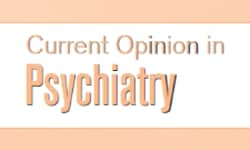
OBJECTIVES:
To compare the antidepressant-like response induced by cannabidiol in adolescent and adult rats and the possible parallel modulation of hippocampal neurogenesis.
RESULTS:
Cannabidiol induced differential effects depending on the age and dose administered, with a decreased sensitivity observed in adolescent rats: (1) cannabidiol (30 mg/kg) decreased body weight only in adult rats; (2) cannabidiol ameliorated behavioral despair in adolescent and adult rats, but with a different dose sensitivity (10 vs. 30 mg/kg), and with a different extent (2 vs. 21 days post-treatment); (3) cannabidiol did not modulate anxiety-like behavior at any dose tested in adolescent or adult rats; and (4) cannabidiol increased sucrose intake in adult rats.
CONCLUSIONS:
Our findings support the notion that cannabidiol exerts antidepressant- and anorexigenic-like effects in adult rats and demonstrate a decreased potential when administered in adolescent rats. Moreover, since cannabidiol did not modulate hippocampal neurogenesis (cell proliferation and early neuronal survival) in adolescent or adult rats, the results revealed potential antidepressant-like effects induced by cannabidiol without the need of regulating hippocampal neurogenesis.”
https://www.ncbi.nlm.nih.gov/pubmed/32086540
https://link.springer.com/article/10.1007%2Fs00213-020-05481-4


 “The number of patients using
“The number of patients using  “In the process of neonatal encephalopathy, oxidative stress and neuroinflammation have a prominent role after perinatal asphyxia. With the exception of therapeutic hypothermia, no therapeutic interventions are available in the clinical setting to target either the oxidative stress or inflammation, despite the high prevalence of neurological sequelae of this devastating condition.
“In the process of neonatal encephalopathy, oxidative stress and neuroinflammation have a prominent role after perinatal asphyxia. With the exception of therapeutic hypothermia, no therapeutic interventions are available in the clinical setting to target either the oxidative stress or inflammation, despite the high prevalence of neurological sequelae of this devastating condition. “Cardiovascular complications are the major cause of mortality in diabetic patients. However, the molecular mechanisms underlying diabetes-associated arrhythmias are unclear.
“Cardiovascular complications are the major cause of mortality in diabetic patients. However, the molecular mechanisms underlying diabetes-associated arrhythmias are unclear. “The most recent studies published or initiated in the last 18 months, investigating cannabidiol in the treatment of symptoms of schizophrenia and related conditions are summarized, including observed tolerability and reported side-effects.
“The most recent studies published or initiated in the last 18 months, investigating cannabidiol in the treatment of symptoms of schizophrenia and related conditions are summarized, including observed tolerability and reported side-effects. “To determine whether differences in disability status, spasticity severity, and spasticity duration at treatment start in patients with resistant multiple sclerosis (MS) spasticity might influence response to add-on tetrahydrocannabinol:
“To determine whether differences in disability status, spasticity severity, and spasticity duration at treatment start in patients with resistant multiple sclerosis (MS) spasticity might influence response to add-on tetrahydrocannabinol: “The cellular microenvironment plays a critical role in the maintenance of bone marrow-derived mesenchymal stem cells (BM-MSCs) and their subsequent cell lineage differentiation. Recent studies suggested that individuals with adipocyte-related metabolic disorders have altered function and adipogenic potential of adipose stem cell subpopulations, primarily BM-MSCs, increasing the risk of heart attack, stroke or diabetes.
“The cellular microenvironment plays a critical role in the maintenance of bone marrow-derived mesenchymal stem cells (BM-MSCs) and their subsequent cell lineage differentiation. Recent studies suggested that individuals with adipocyte-related metabolic disorders have altered function and adipogenic potential of adipose stem cell subpopulations, primarily BM-MSCs, increasing the risk of heart attack, stroke or diabetes.
 “Metastatic breast cancer is prevalent worldwide, and one of the most common sites of metastasis are long bones. Of patients with disease, the major symptom is pain, yet current medications fail to adequately result in analgesic efficacy and present major undesirable adverse effects.
“Metastatic breast cancer is prevalent worldwide, and one of the most common sites of metastasis are long bones. Of patients with disease, the major symptom is pain, yet current medications fail to adequately result in analgesic efficacy and present major undesirable adverse effects. “Phytocannabinoids (and synthetic analogs thereof) are gaining significant attention as promising leads in modern medicine. Considering this, new directions for the design of phytocannabinoid-inspired molecules is of immediate interest. In this regard, we have hypothesized that axially-chiral-cannabinols (ax-CBNs), unnatural and unknown isomers of cannabinol (CBN) may be valuable scaffolds for
“Phytocannabinoids (and synthetic analogs thereof) are gaining significant attention as promising leads in modern medicine. Considering this, new directions for the design of phytocannabinoid-inspired molecules is of immediate interest. In this regard, we have hypothesized that axially-chiral-cannabinols (ax-CBNs), unnatural and unknown isomers of cannabinol (CBN) may be valuable scaffolds for